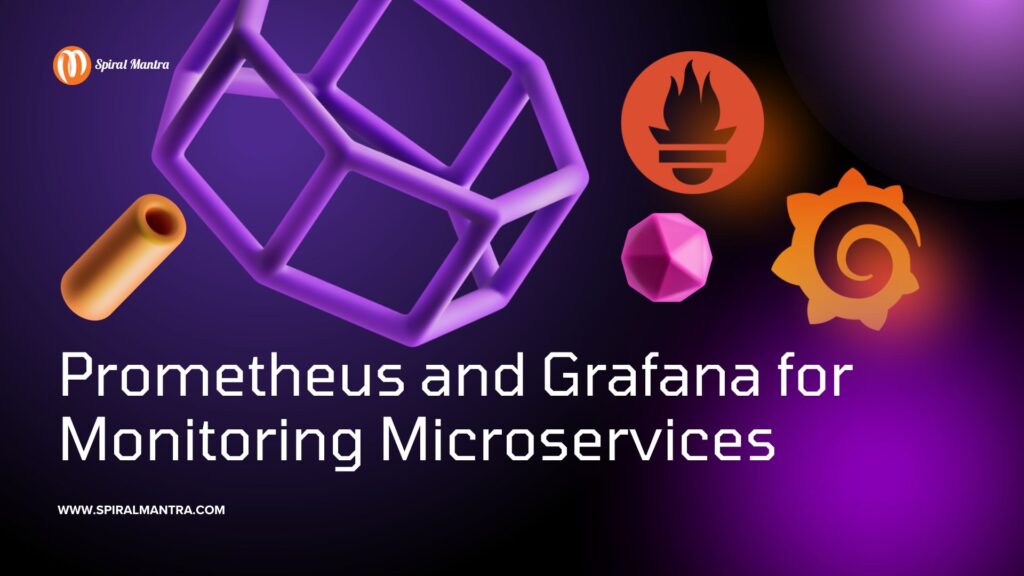If you are searching for this content I believe that you have successfully written and deployed your microservice or maybe you want to make your microservice adventure future proof. The next step is setting up monitoring. The methodical process of compiling actionable data and records is called monitoring.
Software's observability is a crucial feature that is sometimes overlooked. To better comprehend a problem when it arises, you need to be able to see what your application is doing at various levels.
There are numerous open-source projects and tools available to assist you in becoming more visible. Three components are taken into consideration while discussing observability: logs, traces, and metrics.
What is Prometheus and Grafana?
Monitoring sector has attained heights with the two most popular tools called
Grafana and
Prometheus. Prometheus is an open-source time-series database and PromQL is its primary query language that provides excellent support for bespoke query languages and data modeling.
Grafana is an online visualization tool that can handle many different kinds of graphs and charts. Metrics from Prometheus are fed into Grafana, which displays them through dashboards. Additionally, importing predefined dashboards from open sources is quite simple.
These are both free and simple to use tools, however in order to address Prometheus's scalability and high availability problems, you will need to employ a lot of other tools.
How Prometheus and Grafana operate?
After speaking with it about the given questions, Grafana overlays charts. Prometheus obtains metrics using a pull-based methodology, which implies that they are gathered by it from various sources specified in its configurations at predetermined intervals. With its Pushgateway, support for push-based metrics can be enabled. It will retrieve them from Pushgateway, where they can be pushed by a producer.
Alert manager is a tool that is used to configure alerts, which can be sent via email, Slack, or PagerDuty.
Thanos can query from the servers in the backend and therefore it can be helpful in scaling prometheus to achieve high availability. Hence, it can ease the challenging horizontal scaling
Prometheus for Collecting Metrics
Prometheus scrapes metrics from an application that are stored and displayed in a time series database and can be queried in real-time with the triggered alerts.
It caters in works like counter, gauge, histogram, and summary. They can be retrieved and filtered efficiently using key-value pairs, enabling efficient querying and filtering. PromQL processes complex queries, aggregations, and transformations on collected data. A regular collection from various endpoints allows it to analyze or visualize them and trigger alerts when certain conditions are met.
It's possible to set it up to create alerts based on specified threshold situations, so you'll always know when certain metrics go above predetermined bounds.
After gathering metrics Grafana and other similar tools are used to publish them.
Grafana for Metrics in Publishing
The popular open-source observability platform Grafana is used to create intuitive user interfaces for data visualization and analysis from devices like
Prometheus. To gain insightful insights, you can develop user-friendly dashboards with visually appealing and flexible data presentations.
Grafana enables the creation of interactive dashboards for the purpose of exploring metrics through a variety of visualization options, including tables, charts, heatmaps, graphs, and more. Grafana includes several useful features, such as template variables that allow you to dynamically filter and switch between metrics, which speeds up the process of creating dashboards that you can reuse.
Conclusion
Prometheus and Grafana have several benefits, but the main ones are that they are easy to use, free, and offer good observability for your stack. On the other hand, hosting them costs money, and managing them manually takes time. In addition, scaling Prometheus beyond a certain point will require a significant investment in engineering resources. And as we all know, complexity increases with scale, increasing the likelihood of malfunctions.
Here's where
Spiral Mantra, a native K8s platform, comes in. It helps you monitor your whole K8s stack, spot problems, find their source, and figure out what steps to do to troubleshoot effectively and on your own.
